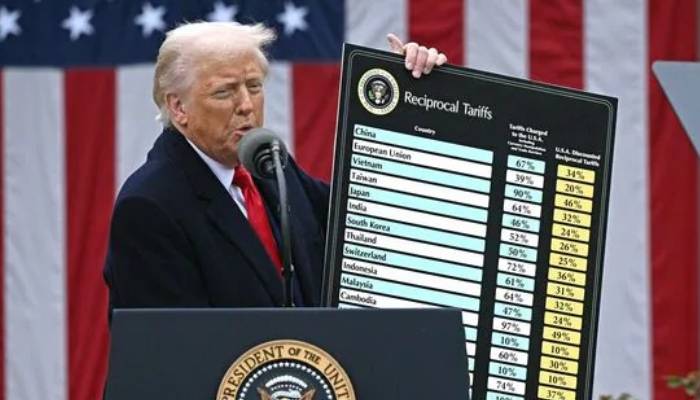Tech sector braces for ripple effects as export-oriented firms fear slowdown—while some industry leaders predict a short-term storm with long-term rebound
India’s export-dependent industries are confronting a turbulent new challenge after the United States imposed a sweeping 26% tariff on Indian imports. The move has triggered alarm across manufacturing and export-driven sectors, and even though software services remain untaxed, the Information Technology (IT) sector is feeling the tremors through indirect channels.
As over 60% of India’s IT exports are tied to the U.S., companies are bracing for a mix of delayed decisions, contract renegotiations, and dampened demand from American clients.
IT Services: Indirect Hits and Global Undercurrents
“We’re already seeing signs of stress in discretionary spending from key clients in the BFSI and retail sectors,” shared a senior Infosys executive. “If uncertainty persists, it could push customers to pause or scale back digital transformation programs.”
“Tariffs are temporary—services will bounce back stronger.”
— Kshitij Kotak, Director, BlackBox
Pranav Pandya, Founder & Chairman of Dev IT, highlighted the broader concern of a potential economic slowdown in the U.S. “It’s noteworthy to keep in mind that eventually, due to lesser discretionary spending power within the USA, we may see a recession—not necessarily at COVID levels, but enough to decrease demand across sectors. This will undoubtedly affect IT services consumption in the U.S. across commerce and industry.”
However, not all experts are equally alarmed. Kshitij Kotak, Director at BlackBox, took a more optimistic view. “This will actually be good for Indian IT consumers, as prices will drop, considering that the IT hardware market in the U.S. will shrink considerably. Also, these tariffs are global and sweeping—so Indian IT services exports will likely bounce back in about two months.”
He added, “Reciprocity will work better for Indian IT. Trump is chasing ‘Make in America,’ but services aren’t the U.S.’s forte—and they’re not cost-effective either, especially since services are a continuous process. This is a global pressure tactic. Frankly, India should also look inward—particularly at our aged taxation system, both for Indians and for global businesses.”
“Reduced U.S. spending power could shrink IT demand—but India must seize the long game.”
— Pranav Pandya, Founder & Chairman, Dev IT
Hiring, Margins, and the Cost Advantage Under Strain
Hiring slowdowns and compressed margins are the immediate consequences facing Indian IT companies, particularly mid-sized ones that rely on price-sensitive and short-term contracts.
“Freshers may find fewer opportunities this year,” noted Ritu Shah, HR lead at a Bengaluru-based consultancy. “We’re preparing for a more conservative approach to talent acquisition and bench allocation.”
Additionally, with a stronger rupee and eroding pricing advantages, the classic cost arbitrage model is now under scrutiny. Some U.S. firms are already exploring nearshoring options in Latin America and Eastern Europe to hedge against supply risk. “The tariff, though not directly on services, is a psychological blow to our largest customer base,”said V. Sridhar, Head of Strategic Initiatives at a Noida-based IT firm. “We’re being forced to accelerate diversification to other geographies like Europe, APAC, and the Middle East.”
Forrester’s report, How To Thrive Through Volatility, underscores how 2025 has been marked by unpredictability and global market instability, with tariffs, cyberthreats, and geopolitical disruptions all contributing to an environment that is forcing companies to either adapt or fall behind.
“The ongoing tariff negotiations on imports from all APAC countries have introduced significant uncertainty into the market, with the full ramifications yet to unfold,” said Frederic Giron, VP & Senior Research Director at Forrester.
“It is imperative for business and tech leaders to engage in comprehensive scenario planning and adaptive strategies to ensure organizational resilience.”
Despite the uncertainty, both Pandya and Kotak see potential silver linings. Pandya emphasized that the negative impact on competing Southeast Asian economies could shift trade advantages toward India. “India could increase its export share to the U.S., and that repositioning may eventually create a positive domestic scenario for IT services consumption within India.”
Kotak, meanwhile, sees the tariffs as a temporary disruption that could quickly reverse. “Trump is looking to make deals. This is part of his larger geopolitical playbook,” he said. “India just needs to be strategically patient and also reform domestically to truly seize the global services opportunity.”
“This tariff shock demands more than reaction—it calls for reinvention.”
— Sanjay Tripathy, CEO, Briskpe
Pandya also noted that not all sectors are equally exposed. “The Indian healthcare and pharma sectors, in particular, appear to be relatively safe from the impact,” he said.
Industry body NASSCOM has appealed to the government for “targeted diplomacy” and urgent domestic support—including tax relief and export credits—to stabilize the sector.
According to sources, the Centre is preparing a sector-wise impact report and may announce a stimulus package for export-oriented industries during the upcoming budget session. Kotak’s call for tax reform resonates here, especially if India aims to become a more attractive hub for global IT investments.
Conclusion
The 26% U.S. tariff may not directly target Indian IT services, but its economic and psychological ripple effects are unmistakable. As leaders like Sanjay Tripathy, Pranav Pandya, and Kshitij Kotak highlight, the situation demands a blend of adaptability, strategic patience, and domestic policy introspection. For India’s tech sector, this moment is not just about weathering the storm—it’s about repositioning for a more resilient, opportunity-rich future.






